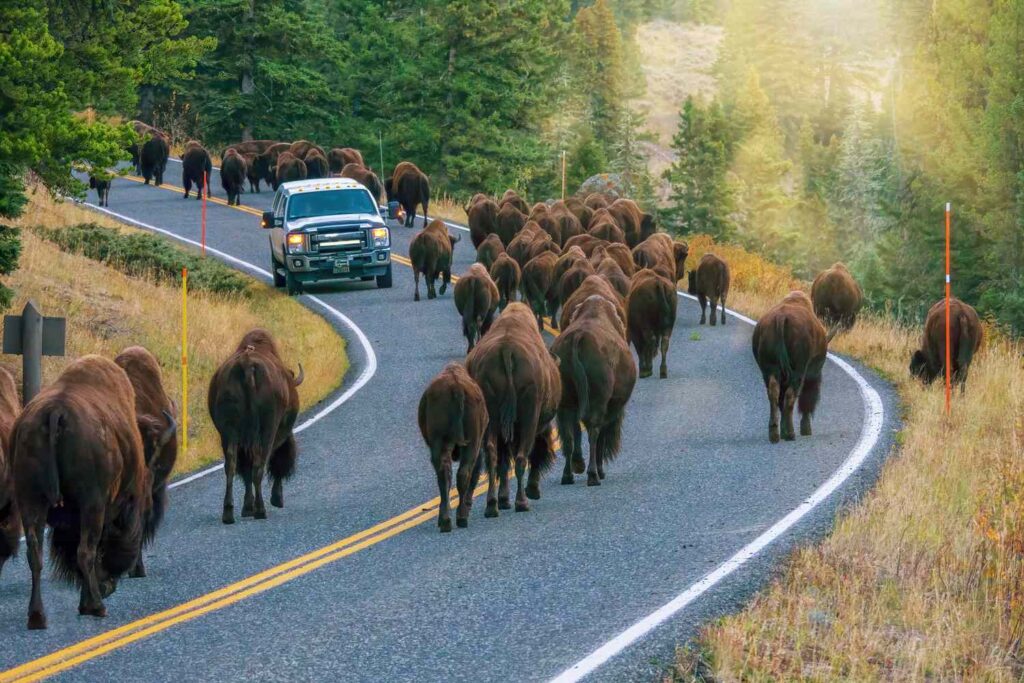There’s no one way to experience Yellowstone National Park. Spanning 2.2 million acres with five entrances—North, Northeast, East, South, and West—the park offers countless routes through its natural wonders. Some travelers start from Jackson Hole, Wyoming, to drive the Lower Loop, while others base themselves in West Yellowstone or Gardiner, Montana, staying overnight in one of 11 campgrounds.
No matter the exact path they took to reach the park, one thing’s for sure: millions of travelers from around the world come to this part of Wyoming and Montana to see everything from geysers and hot springs to waterfalls, dramatic canyons, and the largest high-elevation lake in North America, Yellowstone Lake. They also make the journey to get a glimpse of the incredible, diverse wildlife that calls Yellowstone home—elk, wolves, moose, bison, pronghorn, and grizzly bears, among dozens of other species.
Although the chances of spotting the elusive wolverine or a mountain lion tend to be low, many other mammals make more frequent appearances in highly trafficked areas. You just have to know where (and when) to look.
If you’re hoping to see wolves, as an example, you’ll want to stick to the northern range of Yellowstone. Here, you’ll find Lamar Valley, a prime wildlife viewing area along the Lamar River. Located off the Upper Loop of the park, this stretch of land is often billed as “the Serengeti of North America,” a nickname stemming from its abundance of wildlife. Although you can also see bison in places like Hayden Valley, a more central location within the park, these powerful, furry creatures are regularly spotted in Lamar Valley, along with bears, pronghorn, coyotes, and the occasional bald eagle.
Those traveling to Lamar Valley through the North entrance will drive along Grand Loop Road toward Tower Junction before turning onto the Northeast Entrance Road (US‑212), which brings you directly into Lamar Valley. Entering through the Northeast entrance is also an option, although the North entrance is the only Yellowstone entrance that’s open year-round to vehicles.
And winter is actually one of the best times to drive along the Lamar Valley; the white snow makes it easier to spot wolves, and you’ll still be able to see elk, bison, and foxes. Bears, of course, hibernate from October or November through mid-March or early April.
Remember, though, if you plan on venturing to the “Serengeti of North America,” there are several park rules and regulations to follow. For starters, never feed the animals. You also need to stay a safe distance away. According to the National Park Service, visitors must stay at least 300 feet from wolves and bears and more than 75 feet from bison, elk, and other animals.
https://www.travelandleisure.com/lamar-valley-yellowstone-usa-called-serengeti-of-north-america-11771815


